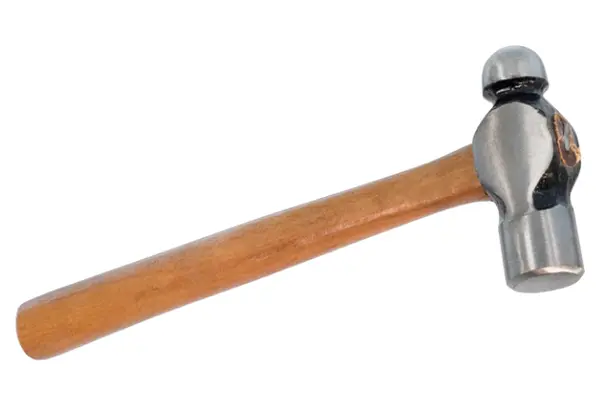The ball peen hammer, also known as a machinist's hammer, is a versatile tool in both metalworking and various other trades. One of its defining features is the ball-shaped peen on one end of the head. This rounded end is what sets it apart from other types of hammers, such as the claw hammer or sledgehammer. This article explores the purpose and applications of the ball on a ball peen hammer, highlighting its importance in shaping metal, riveting, and beyond.
The Design of a Ball Peen Hammer
A typical ball peen hammer consists of a handle made from wood, fiberglass, or metal and a steelhead. The head features two distinct ends: a flat face for striking and a rounded, ball-shaped peen. The dual-purpose design allows for a variety of tasks, making it a staple tool in metalworking and engineering.
Primary Uses of the Ball Peen
Metal Shaping and Forming
One of the primary uses of the ball peen is in metal shaping and forming. The rounded peen is particularly effective in creating curves and bends in metal sheets. This process, known as peening, involves striking the metal to stretch and shape it. The ball peen is ideal for this purpose because it distributes the force over a smaller area, allowing for more precise control and manipulation of the metal.
In blacksmithing and other metalworking trades, the ball peen hammer is used to create specific contours and shapes in metal pieces. By hammering with the rounded end, craftsmen can achieve a variety of textures and forms that are essential in custom metalwork.
Riveting
Another critical application of the ball peen is in riveting. Riveting is a process used to join two pieces of metal together using metal pins or rivets. The ball peen hammer's rounded end is used to shape the heads of the rivets after they have been inserted through the materials. By hammering the rivet head with the ball peen, the metal is flattened and spread out, securing the joint.
This method is essential in industries such as shipbuilding, aviation, and construction, where strong, permanent joints are required. Despite modern advancements in welding and bolting, riveting remains a crucial technique in many applications, and the ball peen hammer plays a key role in this process.
Secondary Uses
Surface Hardening
Peening can also be used for surface hardening, a technique that involves striking the surface of a metal object to induce compressive stress. This process helps to improve the metal's resistance to fatigue and cracking, extending its lifespan and durability. The rounded peen of the hammer is ideal for this purpose as it evenly distributes the impact, making it an effective tool for enhancing the structural integrity of metal components.
Chiseling and Punching
When used in conjunction with a chisel or a punch, the ball peen hammer's flat face delivers precise and controlled blows, while the rounded end can be used for finer adjustments and shaping. This versatility makes it an essential tool in metalworking, carpentry, and other trades where precision is paramount.
Conclusion
The ball-on-a-ball peen hammer is an essential feature that enhances the tool's versatility and effectiveness in various applications. From shaping and forming metal to riveting and surface hardening, the rounded peen provides the precision and control needed for intricate metalworking tasks. Its unique design allows for a wide range of functions, making the ball peen hammer a staple in the toolkits of blacksmiths, machinists, and engineers.
Understanding the purpose and benefits of the ball peen can help users make the most of this versatile tool, ensuring they choose the right hammer for their specific needs and tasks. As technology and techniques continue to evolve, the ball peen hammer remains a reliable and indispensable tool in both traditional and modern trades.
Post time: 08-05-2024






